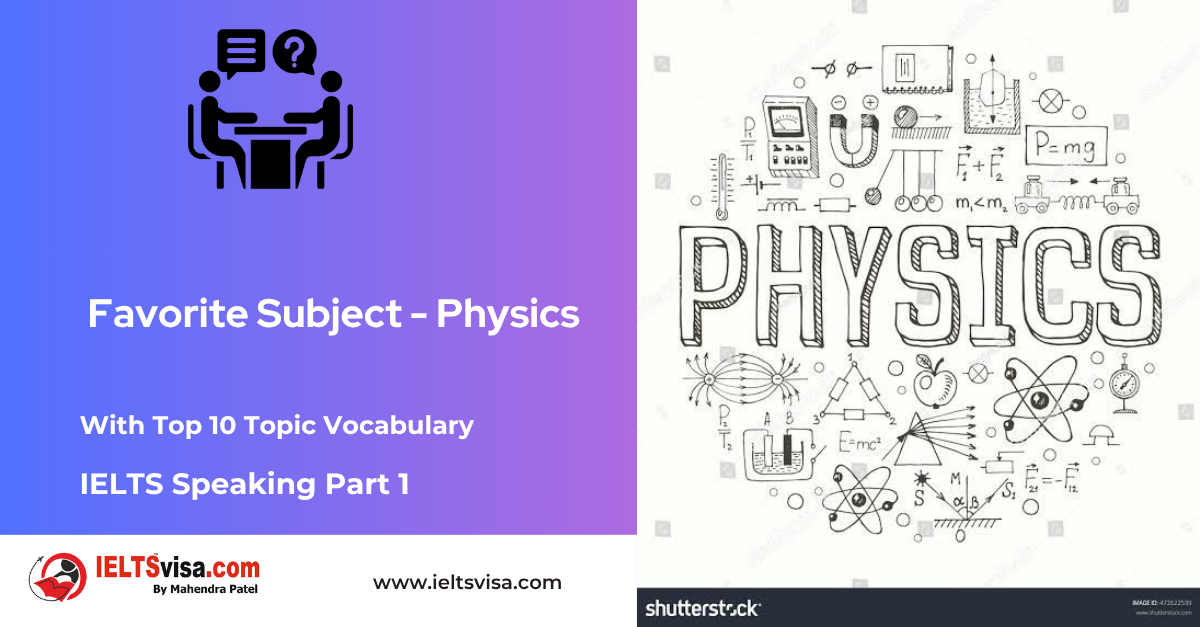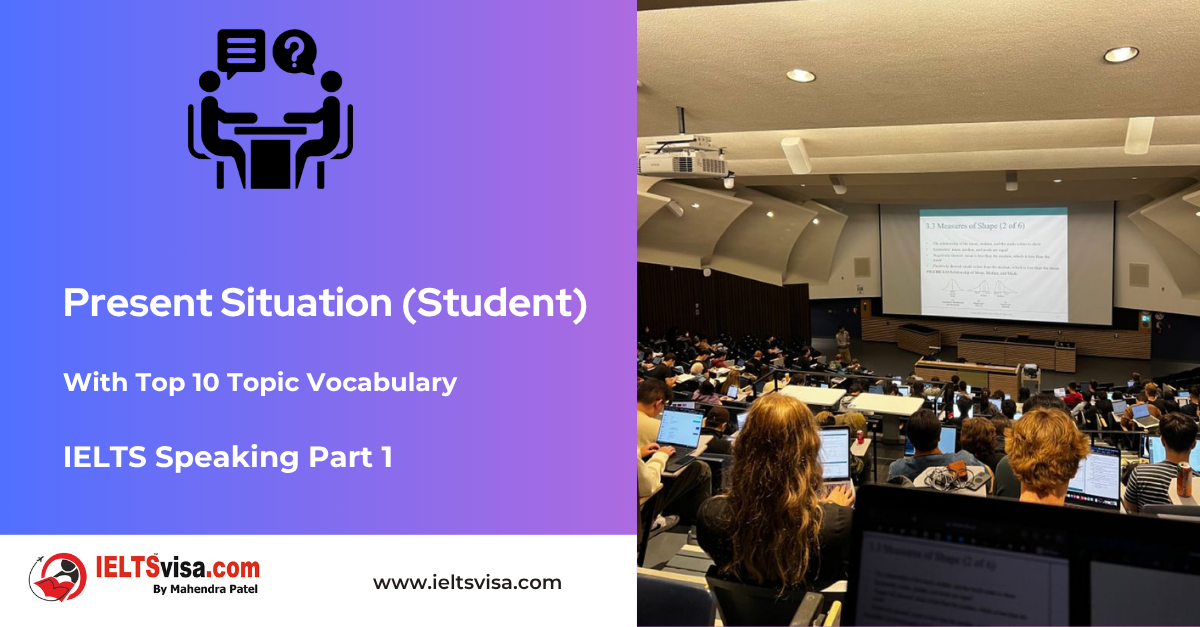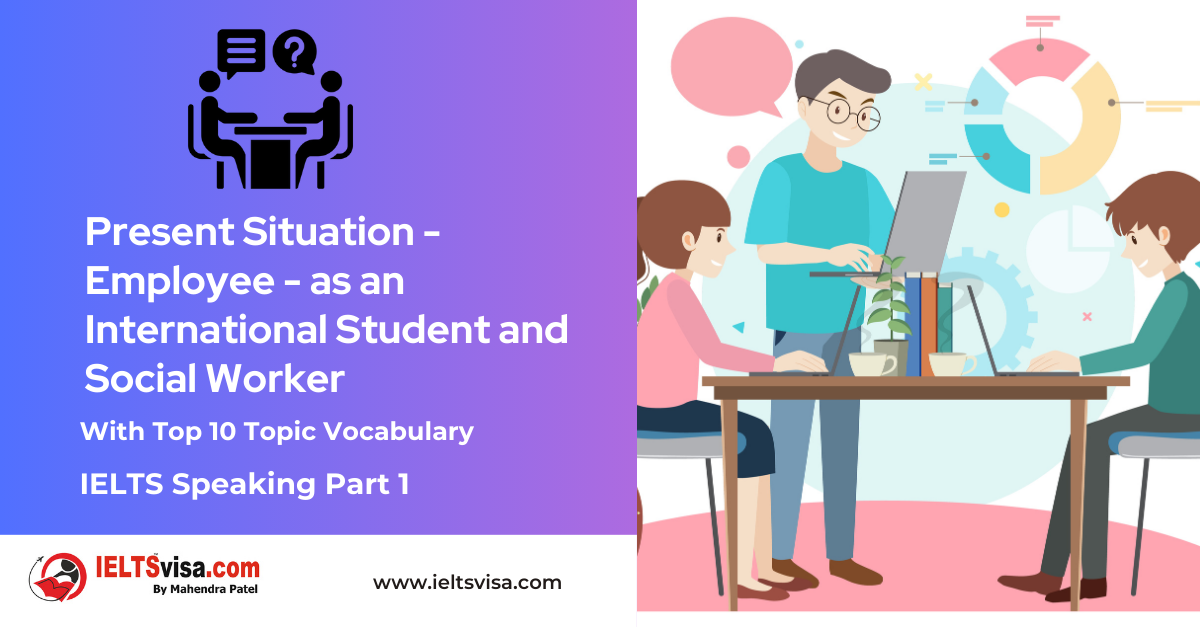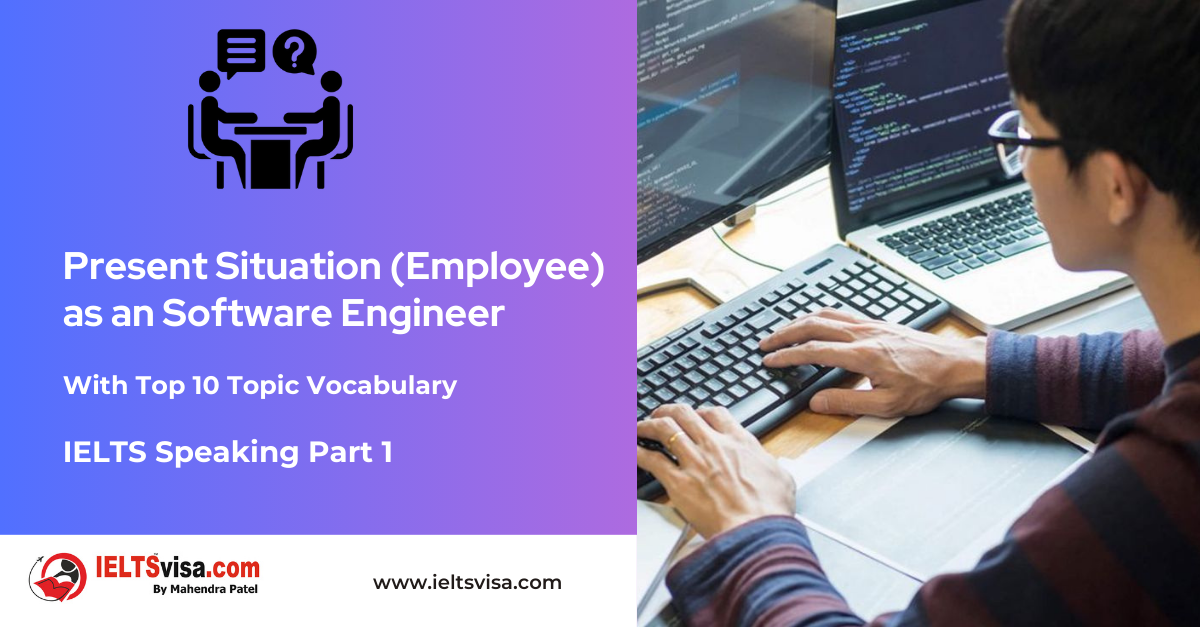-ing and To…
Grammar for IELTS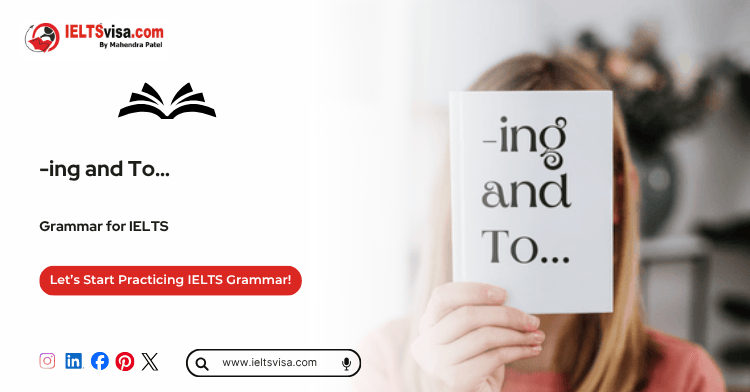
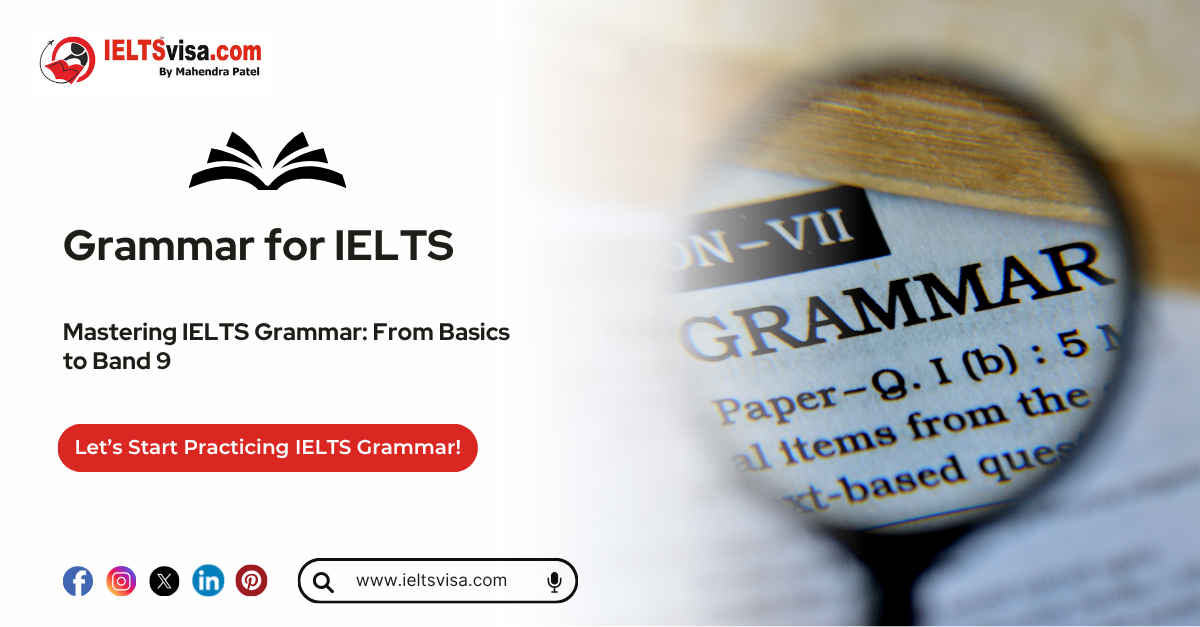
Mastering -ing and To… Forms in English Grammar
The use of -ing forms (gerunds and present participles) and to + infinitive forms is a vital aspect of English grammar. Understanding when and how to use these forms can make your writing and speaking more fluent, natural, and precise. This comprehensive guide will explain their definitions, rules, and uses, enriched with examples and practice exercises for learners of all levels.
Table of Contents
1. What Are -ing and To Forms?
-
- Definition of -ing Forms
- Definition of To + Infinitive Forms
2. Key Differences Between -ing and To + Infinitive
3. Uses of -ing Forms
-
- Gerunds
- Present Participles
4. Uses of To + Infinitive
-
- Purpose
- Intentions
5. Common Verbs Followed by -ing or To
-
- Verbs Followed by -ing
- Verbs Followed by To + Infinitive
- Verbs That Can Take Both Forms (With a Difference in Meaning)
6. Common Mistakes with -ing and To Forms
7. Advanced Usage: Complex Sentences with -ing and To
8. Practice Exercises
9. FAQs on -ing and To Forms
10. Tips for Mastery
1. What Are -ing and To Forms?
Definition of -ing Forms
The -ing form is created by adding -ing to the base verb. It can function as:
1. A Gerund: A noun form of the verb.
-
-
- Example: Swimming is fun.
-
2. A Present Participle: Used to form continuous tenses or as an adjective.
-
-
- Example: She is reading a book.
-
Definition of To + Infinitive Forms
The to + infinitive form consists of the base verb preceded by to. It often indicates purpose or intention.
-
- Example: I want to learn French.
2. Key Differences Between -ing and To + Infinitive
|
Feature |
-ing Form |
To + Infinitive |
|
Function |
Acts as a noun (gerund) or adjective (participle) |
Indicates purpose, intention, or result |
|
Usage |
Focuses on an action in progress or as a concept |
Emphasizes the reason or purpose for an action |
|
Examples |
I enjoy running. She is dancing. |
I want to run. He plans to dance. |
3. Uses of -ing Forms
Gerunds
Gerunds act as nouns. They can be used as:
Subjects:
-
- Example: Reading improves your vocabulary.
Objects:
-
- Example: She enjoys painting.
Objects of Prepositions:
-
- Example: He is good at playing chess.
Present Participles
Present participles are used:
1. To Form Continuous Tenses:
-
- Example: They are studying for their exams.
2. As Adjectives:
-
- Example: The movie was exciting.
4. Uses of To + Infinitive
Purpose
The to + infinitive form is often used to indicate why something is done.
-
- Example: She studies hard to pass her exams.
Intentions
It expresses the intention of the subject.
-
- Example: He plans to travel to Europe next summer.
5. Common Verbs Followed by -ing or To
Verbs Followed by -ing
An -ing form always follows some verbs:
-
- Avoid, enjoy, consider, finish, mind, suggest.
- Example: They suggested going to the park.
Verbs Followed by To + Infinitive
Certain verbs require a to + infinitive:
-
- Want, need, hope, plan, decide, learn.
- Example: She hopes to win the competition.
Verbs That Can Take Both Forms (With a Difference in Meaning)
Some verbs can be followed by either form but with a change in meaning:
1. Forget:
-
- -ing: Refers to forgetting an action.
- Example: I forgot locking the door.
- To + infinitive: Refers to forgetting to do something.
- Example: I forgot to lock the door.
- -ing: Refers to forgetting an action.
2. Stop:
-
- -ing: Refers to stopping an action.
- Example: He stopped smoking.
- To + infinitive: Refers to stopping to do something else.
- Example: He stopped to smoke.
- -ing: Refers to stopping an action.
6. Common Mistakes with -ing and To Forms
1. Using the Wrong Form After Certain Verbs
-
- Incorrect: I enjoy to swim.
- Correct: I enjoy swimming.
2. Confusion in Meaning
-
- Incorrect: I stopped to watch TV. (If you meant stopping watching TV)
- Correct: I stopped watching TV.
3. Forgetting the Preposition
-
- Incorrect: She is good playing tennis.
- Correct: She is good at playing tennis.
7. Advanced Usage: Complex Sentences with -ing and To
Combining actions:
-
- Example: She enjoys running while listening to music.
Using to + infinitive for results:
-
- Example: He worked hard to achieve his dreams.
Gerunds after phrasal verbs:
- Example: They ended up going to the party.
8. Practice Exercises
Fill in the blanks with the correct form (-ing or to):
1. I decided ________ (apply) for the job.
2. She enjoys ________ (paint) landscapes.
3. He stopped ________ (talk) to focus on his work.
4. They hope ________ (win) the championship.
5. I am looking forward to ________ (meet) you.
Answers:
1. To apply
2. Painting
3. Talking
4. To win
5. Meeting
Tips for Mastery
1. Memorize Common Verb Patterns: Create a list of verbs that take -ing, to + infinitive, or both.
2. Practice Daily: Write sentences using -ing and to + infinitive forms.
3. Read and Observe: Notice how these forms are used in books and articles.
4. Use Flashcards: Test yourself with examples of verbs and their correct forms.
FAQs on -ing and To Forms
Q1. How do I know whether to use -ing or to + infinitive?
Check the verb. Some verbs take only -ing, some take only to + infinitive, and others can take both with a difference in meaning.
Q2. Can -ing forms be used as adjectives?
Yes, -ing forms can act as adjectives.
-
- Example: It was an exciting game.
Q3. What’s the difference between gerunds and present participles?
Gerunds act as nouns, while present participles act as adjectives or form continuous tenses.

Our Books
Master IELTS Speaking Part 1
IELTS Writing Task 1 Book
IELTS Writing Task 2 Book
Practice IELTS Other Modules
IELTS Listening
The IELTS Listening test assesses how well you can understand spoken English in various contexts. It lasts about 30 minutes and is divided into four sections with a total of 40 questions. The listening tasks become increasingly difficult as the test progresses.
IELTS Academic Reading
The IELTS Academic Reading section assesses your ability to understand and interpret a variety of texts in academic settings. It is designed to evaluate a range of reading skills, including skimming for gist, reading for main ideas, reading for detail, understanding inferences, and recognizing a writer's opinions and arguments.
IELTS Speaking
The IELTS Speaking test assesses your ability to communicate in English on everyday topics. It lasts 11-14 minutes and consists of three parts: introduction, cue card, and a discussion based on the cue card topic.
IELTS General Reading
IELTS General Reading tests your ability to understand and interpret various types of texts. Here are some key areas and types of content you can expect to encounter in the reading section, along with tips for effective preparation.
IELTS Academic Writing Task 1
In IELTS Academic Writing Task 1, you are presented with a visual representation of information, such as graphs, charts, tables, or diagrams, and you are required to summarize, compare, or explain the data in your own words.
IELTS General Writing Task 1
In IELTS General Writing Task 1, you are required to write a letter based on a given situation. The letter can be formal, semi-formal, or informal, depending on the prompt. Here’s a breakdown of the key components to include in your letter
IELTS Academic Writing Task 2
In IELTS Academic Writing Task 2, you are required to write an essay in response to a question or topic. Here’s a guide to help you understand the essential elements of this task
IELTS Exam Tips
To succeed in the IELTS exam, practice regularly, familiarize yourself with the test format, improve your vocabulary, develop time management skills, and take mock tests to build confidence.
Grammer for IELTS
Grammar is the foundation of effective communication in English. Understanding tense usage, subject-verb agreement, and sentence structure enhances clarity and coherence in writing and speaking.
Vocabulary for IELTS
Vocabulary plays a crucial role in the IELTS (International English Language Testing System) exam, especially in the Speaking and Writing sections. Here’s an overview of why vocabulary is important and how it impacts your performance
RECENT IELTS SAMPLES QUESTIONS AND ANSWERS
IELTS Speaking Part 1 – Favourite Sujbect – Physics
IELTS Speaking Part 1 - Favourite Sujbect - Physics Q: What is your favourite subject? A: My favourite subject...
IELTS Speaking Part 1 – Present Situation (Student)
IELTS Speaking Part 1 - Present Situation (Student) Q1: Are you a student or do you work?A: I’m a full-time...
IELTS Speaking Part 1 – Present Situation – Employee – as an International Student and Social Worker
IELTS Speaking Part 1 - Present Situation - Employee - as an International Student and Social Worker Q1: Are...
IELTS Speaking Part 1 – Persent Situation – Employee- as an Electric Engineer
IELTS Speaking Part 1 - Persent Situation - Employee- as an Electric Engineer Q1: What do you do for a...
IELTS Speaking Part 1 – Persent Situation – Employee – as an Software Engineer
IELTS Speaking Part 1 - Persent Situation - Employee - as an Software Engineer Q1: What do you do for a...
IELTS Speaking Part 1 – Persent Situation – Married
IELTS Speaking Part 1 - Persent Situation - Married Q1: Are you married?A: Yes, I am married. My spouse and I...

